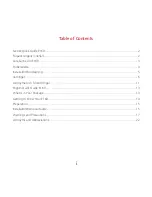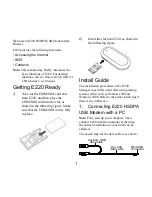
2.3.4. Addressing hints
In large and complex networks with numerous repeaters, individual routing tables may become long
and difficult to comprehend. To keep the routing tables simple, the addressing scheme should follow
the layout of the radio network.
More specifically, every group of IP addresses of devices (both RipEX's and SCADA), which is accessed
via a repeater, should fall in a range which can be defined by a mask and no address defined by that
mask exists in different part of the network.
A typical network consisting of a single centre and number of remotes has got a tree-like layout, which
can be easily followed by the addressing scheme – see the example in the Figure
Optimised addressing
below.
10.10.10.50/24
192.168.50.2/24
Routing table RipEX50:
192.168.0.0/22
10.10.10.1
192.168.4.0/22
10.10.10.4
Default GW
192.168.50.2
è
è
10.10.10.2/24
192.168.2.1/24
192.168.2.2/24
Routing table
:
192.168.0.0/16
10.10.10.1
RipEX2
è
10.10.10.4/24
192.168.4.2/24
Routing table RipEX4:
192.168.0.0/16
10.10.10.50
è
10.10.10.1/24
192.168.1.1/24
192.168.1.2/24
Routing table
:
192.168.2.0/24
10.10.10.2
RipEX1
192.168.0.0/16
10.10.10.50
è
è
192.168.4.1/24
4
50
FEP
1
2
Radio IP
ETH IP
FEP IP
192.168.50.1/24
Fig. 2.3: Optimised addressing
The default gateway is also a very powerful routing tool, however be very careful whenever the default
route would go to the radio interface, i.e. to the radio channel. If a packet to non-existing IP destination
came to the router, it would be transmitted over the radio channel. Such packets increase the load of
the network at least, cause excessive collisions, may end-up looping etc. Consequently the default
route should always lead to the ETH interface, unless you are perfectly certain that a packet to non-
existing destination IP may never appear (remember you are dealing with complex software written
and configured by humans).
RipEX Radio modem & Router – © RACOM s.r.o.
22
RipEX in detail
Summary of Contents for RipEX 1.5
Page 2: ......
















































